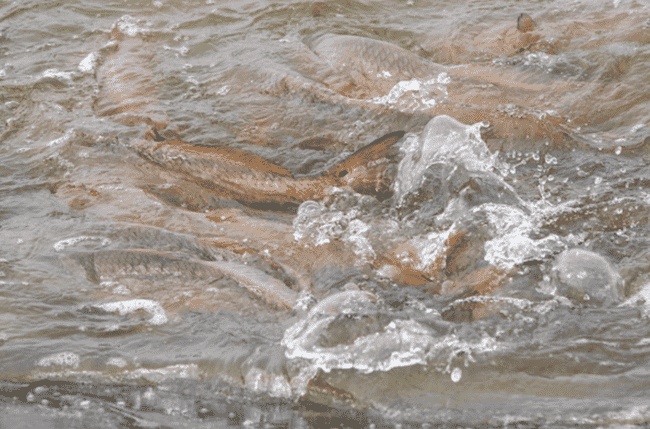
The species has been successfully farmed since the 1980s © Michael Miller/Texas A&M AgriLife
Researchers from Texas A&M AgriLife Extension Service – Dr Todd Sink and Brittany Chesser – are leading the stock improvement programme, which is being supported by a $300,000 grant from the US Department of Agriculture Southern Regional Aquaculture Center
(SRAC).
The origins of red drum aquaculture can be traced back to the 1980s, when consumer demand and overfishing led to a population collapse in the Gulf of Mexico.
Since then, red drum stocks in the Gulf of Mexico have recovered and the red drum aquaculture industry has also grown, with Texas home to eight of the 12 red drum farms in the US, worth an annual economic contribution of more than $220 million to the state.
Diversifying red drum genetics
All the broodfish currently used in red drum aquaculture were captured from the wild, and because it is a long-lived species, Sink said many of those same fish have spawned on the same farms since the early stages of the industry.
“A large farm might produce 5 million food fish a year, and all of those fish might be from six to eight parents. If something happens to one of your broodfish, you’re severely impacting not just that farm but the entire industry," explained Sink in a press release from Texas A&M.
Sink and Chesser’s work seeks to remedy this.
Together, the team will collect genetic information from at least half of the existing state and commercial hatcheries to generate new stock. This new broodstock will then be selectively grown out and genetically tested for ideal traits, including growth rate, improved feed conversion and cold tolerance.
Sink said cold tolerance is of great importance for producers, following dramatic losses incurred during Winter Storm Uri and additional cold snaps in subsequent years.
“Since the industry started, producers typically would expect a damaging freeze about every 10 years, but we’ve seen three catastrophic freezes in the last six years,” Sink said. “They are in dire need of cold-tolerant fish.”
Guidance for producers
Sink said the three-year turnaround for this project is a very short timeline compared to the decades-long genetic improvement programs seen in catfish and striped bass.
During this time, the research team will also develop a guiding document for producers detailing the non-technical background, design and resources making it possible for them to implement the breeding programme within their own operations.
“Breeding values, representing the value of each fish, and pedigree data will be used to create a breeding plan for producers to create the next generation of broodstock that will maximise genetic gains of desired traits while minimising inbreeding,” Sink said.
The guiding document will provide multiple strategies from SRAC experts for producers’ red drum selective breeding programmes.
Sink said he hopes this work will improve efficiency and continued success in Texas’ red drum production with the ultimate goal of industry expansion.
“The SRAC works under a producer-focused model that keeps them engaged in the research and decision-making process, This project was determined by the producers, and we will have a deliverable guide available to them by the end of the project term," he concluded.



